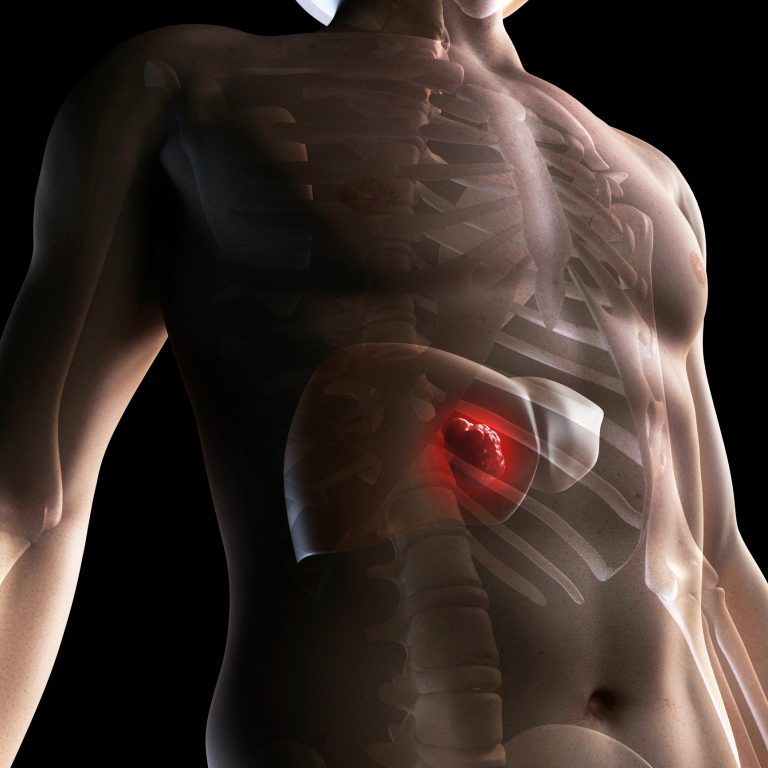
A multi-institutional research team led by Salk scientists has defined how antibodies recognize phosphohistidine—a highly unstable molecule that may to play a central role in some forms of cancer, such as liver and breast cancer and neuroblastoma.
These insights can fuel further studies of phosphohistidine’s potential role in cancer. They also make it possible to manipulate the shape and atomic makeup of the antibodies’ binding sites in order to design ever more efficient antibodies.
Their study was recently published in Proceedings of the National Academy of Sciences (PNAS).
“We are excited that these new antibody structures reveal novel principles of antigen binding. Now we can redesign these antibodies and engineer their properties to make them more efficient,” says Tony Hunter, Renato Dulbecco Chair and American Cancer Society Professor at Salk and the paper’s senior author. “This work may also provide other scientists with phosphohistidine antibodies that better suit their research purposes.”
Phosphorylation occurs when a phosphate is added to an amino acid, changing its shape and charge. It is a crucial posttranslational modification that extends the functionality and versatility of the cellular proteome.
Phosphohistidine (pHis) is a labile posttranslational modification with two isoforms, 1-pHis and 3-pHis, involved in many cellular processes. Due to its lability, it is difficult to study the pHis modification using standard biochemical tools and techniques. However, these antibodies are promising tools to uncover the role of pHis in eukaryotic cells.
In this paper, Hunter and his colleagues report the crystal structures of five mAbs bound to their cognate phosphotriazolylalanine peptides, thus providing insight into the structure–function relationships that guide pHis recognition and establishing a foundation for the structure-guided design of improved pHis antibodies.
Previously, Hunter showed that phosphorylation on the amino acid tyrosine can drive cancer progression. More recently, he turned his attention to phosphorylation of the amino acid histidine (which creates phosphohistidine), suspecting that the process might also play a role in human disease.
Hunter developed a suite of antibodies able to bind to phosphohistidine in proteins, and used chemically stabilized phosphohistidine analogues to develop a series of monoclonal antibodies that could recognize these forms. The next step was to understand exactly how the antibodies are able to bind to phosphohistidine. At this point, Hunter collaborated with Ian Wilson, the Hansen Professor of Structural Biology at the Scripps Research Institute and an expert in using protein crystallography to define antibody structures, to study the structures of the phosphohistidine antibodies.
“My long-term colleague Tony and I have been collaborating on this project for the past seven years,” says Wilson. “We have obtained new insights into how antibodies can evolve to recognize phosphates linked to proteins, which is very satisfying.”
They proceeded to image their antibodies in the act of binding the phosphohistidine, and so formed crystals between each antibody bound to a phosphohistidine peptide.
“To understand the molecular interactions between the antibodies and phosphohistidine, we needed to look at them in great detail,” says first author Rajasree Kalagiri, a Salk postdoctoral researcher and X-ray crystallographer. “Once we got the antibodies to form crystals, we bombarded those crystals with X-rays to obtain a diffraction pattern. We then applied methods that transform the diffraction pattern into a three-dimensional electron density map, which was then used to discern the atomic structure of the antibodies.”
The two types of antibody crystal structures solved by the team revealed exactly how different amino acids are arranged around the phosphohistidine to bind it tightly. Their five structures more than double the number of phospho-specific antibody structures previously reported, and provide insights into how antibodies recognize both the phosphate and the linked histidine. They also reveal at a structural level how the two types of antibody recognize different forms of phosphohistidine, and this will allow the scientists to engineer improved antibodies in the future.













